
Conducting Forensic Analysis and Incident Response Using Cisco CyberOps Technologies (CBRFIR)
Last Update Nov 30, 2025
Total Questions : 115
We are offering FREE 300-215 Cisco exam questions. All you do is to just go and sign up. Give your details, prepare 300-215 free exam questions and then go for complete pool of Conducting Forensic Analysis and Incident Response Using Cisco CyberOps Technologies (CBRFIR) test questions that will help you more.



A new zero-day vulnerability is discovered in the web application. Vulnerability does not require physical access and can be exploited remotely. Attackers are exploiting the new vulnerability by submitting a form with malicious content that grants them access to the server. After exploitation, attackers delete the log files to hide traces. Which two actions should the security engineer take next? (Choose two.)
Refer to the exhibit.
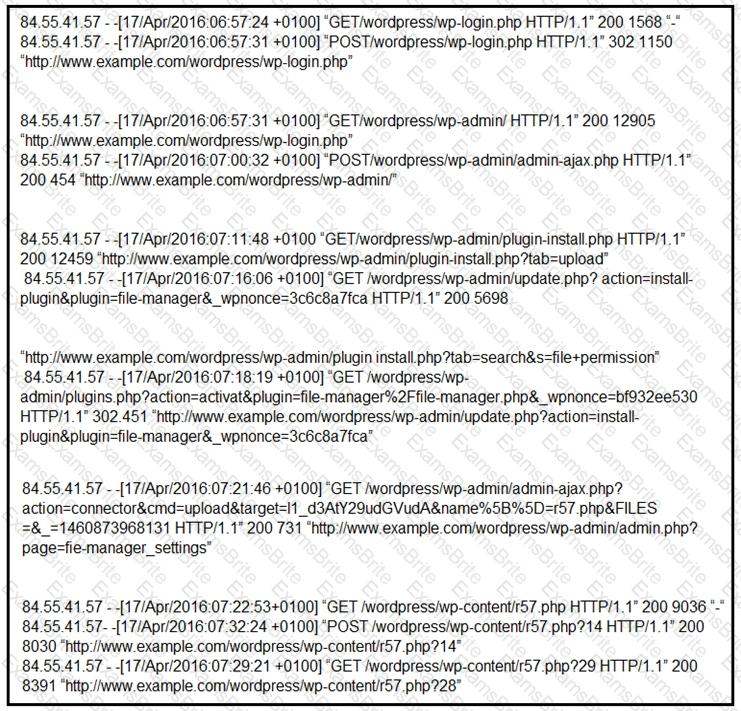
Which two determinations should be made about the attack from the Apache access logs? (Choose two.)
Which technique is used to evade detection from security products by executing arbitrary code in the address space of a separate live operation?
In a secure government communication network, an automated alert indicates the presence of anomalous DLL files injected into the system memory during a routine update of communication protocols. These DLL files are exhibiting beaconing behavior to a satellite IP known for signal interception risks. Concurrently, there is an uptick in encrypted traffic volumes that suggests possible data exfiltration. Which set of actions should the security engineer prioritize?
Refer to the exhibit.
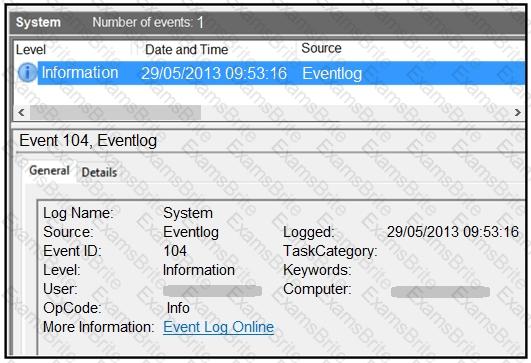
An employee notices unexpected changes and setting modifications on their workstation and creates an incident ticket. A support specialist checks processes and services but does not identify anything suspicious. The ticket was escalated to an analyst who reviewed this event log and also discovered that the workstation had multiple large data dumps on network shares. What should be determined from this information?
A company had a recent data leak incident. A security engineer investigating the incident discovered that a malicious link was accessed by multiple employees. Further investigation revealed targeted phishing attack attempts on macOS systems, which led to backdoor installations and data compromise. Which two security solutions should a security engineer recommend to mitigate similar attacks in the future? (Choose two.)
Refer to the exhibit.

A cybersecurity analyst is presented with the snippet of code used by the threat actor and left behind during the latest incident and is asked to determine its type based on its structure and functionality. What is the type of code being examined?
Which scripts will search a log file for the IP address of 192.168.100.100 and create an output file named parsed_host.log while printing results to the console?
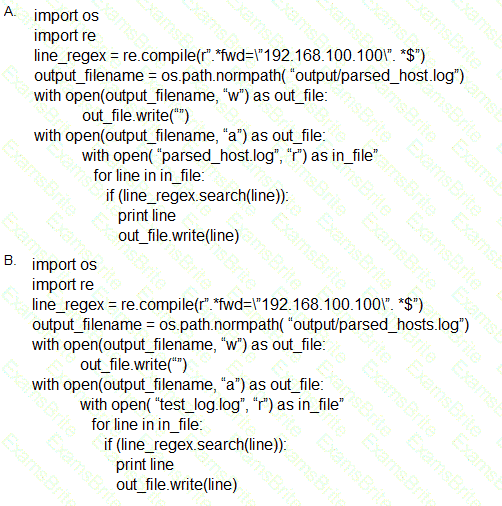
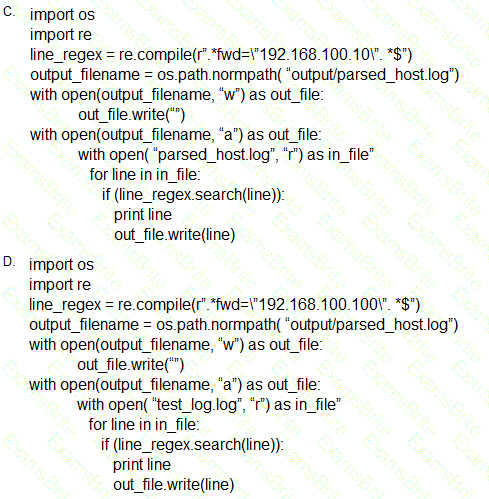
A cybersecurity analyst is analyzing a complex set of threat intelligence data from internal and external sources. Among the data, they discover a series of indicators, including patterns of unusual network traffic, a sudden increase in failed login attempts, and multiple instances of suspicious file access on the company's internal servers. Additionally, an external threat feed highlights that threat actors are actively targeting organizations in the same industry using ransomware. Which action should the analyst recommend?
A security team needs to prevent a remote code execution vulnerability. The vulnerability can be exploited only by sending '${ string in the HTTP request. WAF rule is blocking '${', but system engineers detect that attackers are executing commands on the host anyway. Which action should the security team recommend?
Refer to the exhibit.
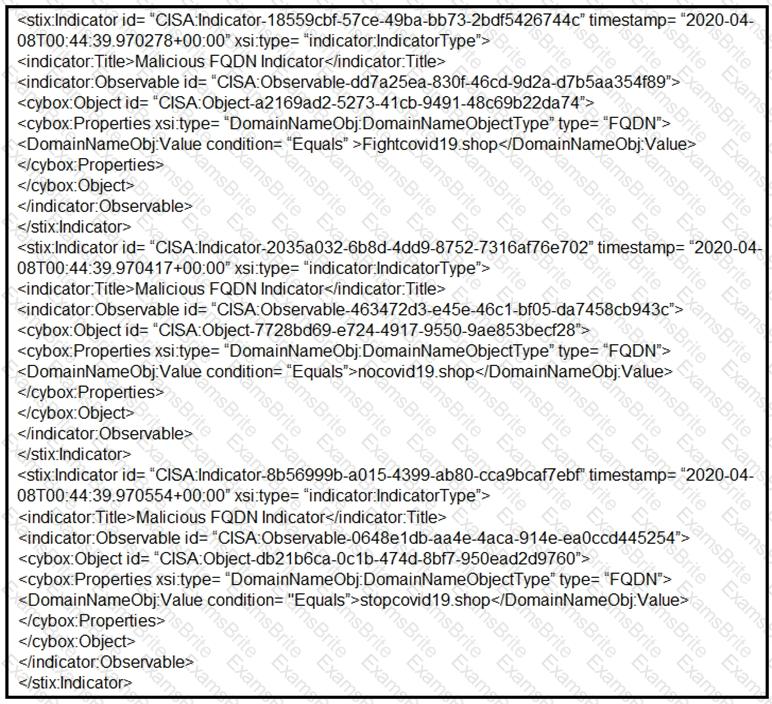
Which two actions should be taken based on the intelligence information? (Choose two.)
An incident response analyst is preparing to scan memory using a YARA rule. How is this task completed?
What is a concern for gathering forensics evidence in public cloud environments?
An engineer received a call to assist with an ongoing DDoS attack. The Apache server is being targeted, and availability is compromised. Which step should be taken to identify the origin of the threat?
Drag and drop the cloud characteristic from the left onto the challenges presented for gathering evidence on the right.
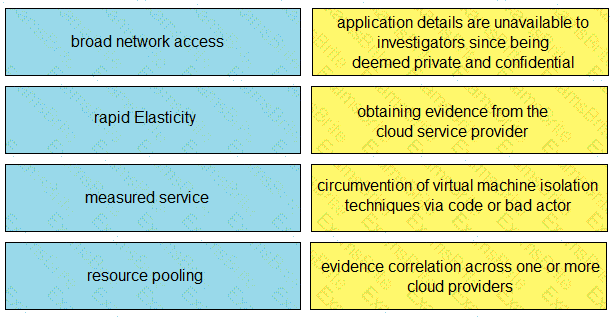
Refer to the exhibit.
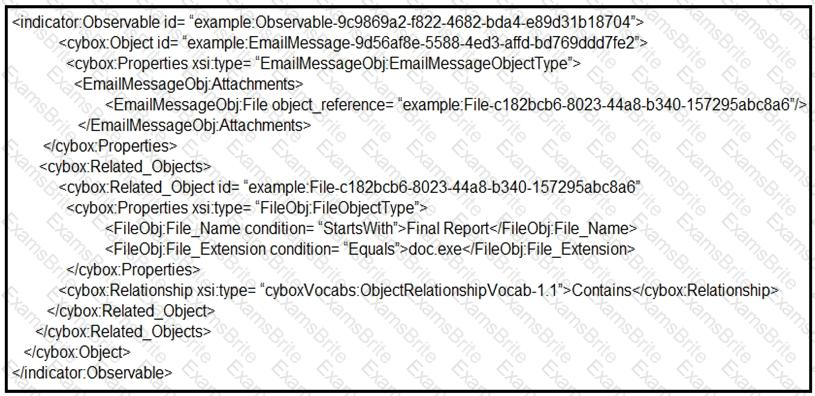
Which determination should be made by a security analyst?
What can the blue team achieve by using Hex Fiend against a piece of malware?
An engineer must advise on how YARA rules can enhance detection capabilities. What can YARA rules be used to identify?
Drag and drop the steps from the left into the order to perform forensics analysis of infrastructure networks on the right.
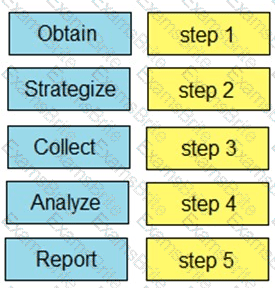
An investigator is analyzing an attack in which malicious files were loaded on the network and were undetected. Several of the images received during the attack include repetitive patterns. Which anti-forensic technique was used?
Over the last year, an organization’s HR department has accessed data from its legal department on the last day of each month to create a monthly activity report. An engineer is analyzing suspicious activity alerted by a threat intelligence platform that an authorized user in the HR department has accessed legal data daily for the last week. The engineer pulled the network data from the legal department’s shared folders and discovered above average-size data dumps. Which threat actor is implied from these artifacts?
What describes the first step in performing a forensic analysis of infrastructure network devices?
A malware outbreak revealed that a firewall was misconfigured, allowing external access to the SharePoint server. What should the security team do next?
A security team is notified from a Cisco ESA solution that an employee received an advertising email with an attached .pdf extension file. The employee opened the attachment, which appeared to be an empty document. The security analyst cannot identify clear signs of compromise but reviews running processes and determines that PowerShell.exe was spawned by CMD.exe with a grandparent AcroRd32.exe process. Which two actions should be taken to resolve this issue? (Choose two.)
An organization fell victim to a ransomware attack that successfully infected 256 hosts within its network. In the aftermath of this incident, the organization's cybersecurity team must prepare a thorough root cause analysis report. This report aims to identify the primary factor or factors that led to the successful ransomware attack and to develop strategies for preventing similar incidents in the future. In this context, what should the cybersecurity engineer include in the root cause analysis report to demonstrate the underlying cause of the incident?